I've gotten a lot of information from these two posts on SO about putting a gradient fill below a curve in matplotlib. I tried the same thing plotting multiple plots on one axis and working the order of them and their alpha to ensure they're visible. I'm getting errors with PIL with this code that outputs this graph: 
Is it possible to have the 'fill' below the plot come down further, and fix the error in the bottom right corner? I've included the data that I used in this example by putting raw data on bpaste, so even though it's long the example is completely self-contained.
Could it have something to do with the backend used?
Thanks, Jared
import pandas as pd
import matplotlib.pyplot as plt
import matplotlib.colors as mcolors
from matplotlib.patches import Polygon
from matplotlib.ticker import Formatter, FuncFormatter
import matplotlib
import numpy as np
from PIL import Image
from PIL import ImageDraw
from PIL import ImageFilter
df = pd.read_csv('https://bpaste.net/raw/87cbf69259ae')
df = df.set_index('Date', drop=True)
df.index = pd.to_datetime(df.index)
df1 = pd.read_csv('https://bpaste.net/raw/bc06b26b0b8b')
df1 = df1.set_index('Date', drop=True)
df1.index = pd.to_datetime(df1.index)
def zfunc(x, y, fill_color='k', alpha=1.0, xmin=None, xmax=None, ymin=None, ymax=None):
if xmax is not None:
xmax = int(xmax)
if xmin is not None:
xmin = int(xmin)
if ymax is not None:
ymax = int(ymax)
if ymin is not None:
ymin = int(ymin)
w, h = xmax-xmin, ymax-ymin
z = np.empty((h, w, 4), dtype=float)
rgb = mcolors.colorConverter.to_rgb(fill_color)
z[:,:,:3] = rgb
# Build a z-alpha array which is 1 near the line and 0 at the bottom.
img = Image.new('L', (w, h), 0)
draw = ImageDraw.Draw(img)
xy = (np.column_stack([x, y]))
xy -= xmin, ymin
# Draw a blurred line using PIL
draw.line(map(tuple, xy.tolist()), fill=255, width=15)
img = img.filter(ImageFilter.GaussianBlur(radius=25))
# Convert the PIL image to an array
zalpha = np.asarray(img).astype(float)
zalpha *= alpha/zalpha.max()
# make the alphas melt to zero at the bottom
n = int(zalpha.shape[0] / 4)
zalpha[:n] *= np.linspace(0, 10, n)[:, None]
z[:,:,-1] = zalpha
return z
def gradient_fill(x, y, fill_color=None, ax=None, ylabel=None, zfunc=None, **kwargs):
if ax is None:
ax = plt.gca()
if ylabel is not None:
ax.set_ylabel(ylabel, weight='bold', color='white')
class DateFormatter(Formatter):
def __init__(self, dates, fmt='%b \'%y'):
self.dates = dates
self.fmt = fmt
def __call__(self, x, pos=0):
'Return the label for time x at position pos'
ind = int(round(x))
if ind>=len(self.dates) or ind<0: return ''
return self.dates[ind].strftime(self.fmt)
def millions(x, pos):
return '$%d' % x
dollar_formatter = FuncFormatter(millions)
formatter = DateFormatter(df.index)
ax.yaxis.grid(linestyle='-', alpha=0.5, color='white', zorder=-1)
line, = ax.plot(x, y, linewidth=2.0, c=fill_color, **kwargs)
if fill_color is None:
fill_color = line.get_color()
zorder = line.get_zorder()
if 'alpha' in kwargs:
alpha = kwargs['alpha']
else:
alpha = line.get_alpha()
alpha = 1.0 if alpha is None else alpha
xmin, xmax, ymin, ymax = x.min(), x.max(), y.min(), y.max()
diff = ymax - ymin
ymin = ymin - diff*0.15
ymax = diff*0.05 + ymax
if zfunc is None:
## Grab an array of length (cols,rows,spacing) but don't initialize values
z = np.empty((110, 1, 4), dtype=float)
## get color to fill for current axix line
rgb = mcolors.colorConverter.to_rgb(fill_color)
z[:,:,:3] = rgb
z[:,:,-1] = np.linspace(0, alpha, 110)[:,None]
else:
z = zfunc(x, y, fill_color=fill_color, alpha=alpha, xmin=xmin, xmax=xmax, ymin=ymin, ymax=ymax)
im = ax.imshow(z, aspect='auto', extent=[xmin, xmax, ymin, ymax], origin='lower', zorder=zorder)
xy = np.column_stack([x, y])
xy = np.vstack([[xmin, ymin], xy, [xmax, ymin], [xmin, ymin]])
clip_path = Polygon(xy, facecolor='none', edgecolor='none', closed=True)
ax.add_patch(clip_path)
ax.patch.set_facecolor('black')
im.set_clip_path(clip_path)
ax.xaxis.set_major_formatter(formatter)
ax.yaxis.set_major_formatter(dollar_formatter)
for tick in ax.get_yticklabels():
tick.set_color('white')
for tick in ax.get_xticklabels():
tick.set_color('white')
w = 17.5 * 1.5 # approximate size in inches of 1280
h = 7.5 * 1.5 # approximate size in inches of 720
fig = plt.gcf()
fig.set_size_inches(w, h)
# fig.autofmt_xdate()
plt.rcParams['xtick.major.pad']='20'
matplotlib.rcParams['ytick.major.pad']='20'
matplotlib.rcParams.update({'font.size': 22})
ax.set_ylim((ymin, ymax))
#ax.autoscale(True)
return line, im, ax
line, im, ax = gradient_fill(np.arange(len(df1.index)), df1['/CL_Close'], fill_color='#fdbf6f', ylabel='Crude Oil', alpha=1.0, zfunc=zfunc)
ax2 = ax.twinx()
gradient_fill(np.arange(len(df.index)), df['/ES_Close'], ax=ax2, fill_color='#cab2d6', ylabel='S&P', alpha=0.75, zfunc=zfunc)
ax2.yaxis.grid(False)
